Charger Nitecore SC2, updated version
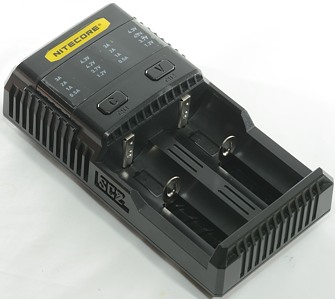
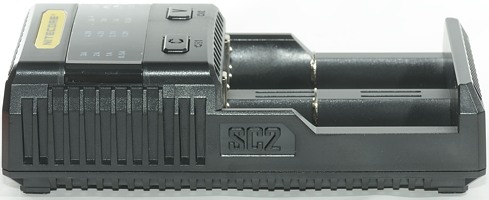
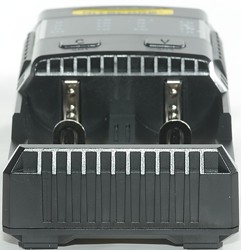
The SC2 charger is a new model from Nitecore with support for higher charge currents and larger cells, it supports 3 LiIon voltages and NiMH cells. First test I did on this charger failed, Nitecore changed some details and have sent a new one to me. I hope this fixes all the problems with the charger.
The review will be based on the failed review, but with new tests and adjusted remarks.


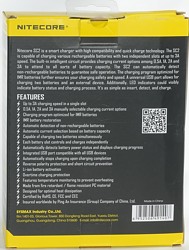

The cardboard box lists lot of specifications, battery types and features.
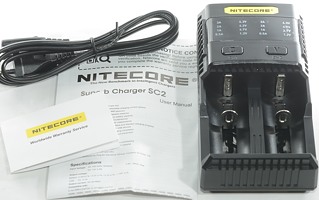
The box contains the charger, a mains cable, manual and a warranty card.
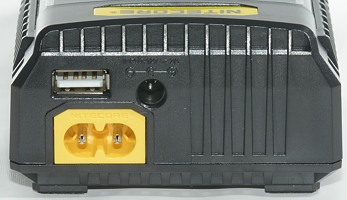
The charger has two power connectors, one for mains input (100-240VAC 50/60Hz) and one for 12 VDC input.
There is also a usb output connector, this is not a power bank, but mains powered usb output.
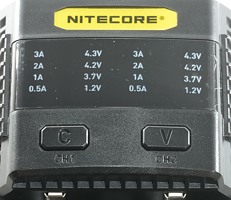
The charger has a new user interface with two buttons and 16 blue leds.
The user interface is a bit special, usual it will select current depending on battery length and chemistry, and either 1.2V or 4.2V depending on battery voltage, but it can be overridden.
To change voltage or current the button above that slot must be pressed shortly, next hold the C or V button down to select (Look at leds) and release when the correct value is shown. Press again shortly on the button above the slot or wait for timeout.
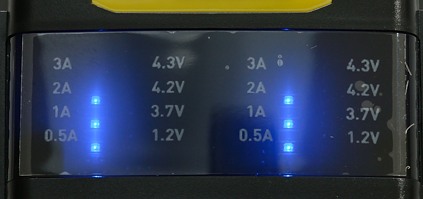
The protection plastic over the display lists the voltage and currents that they signify when adjusting settings.
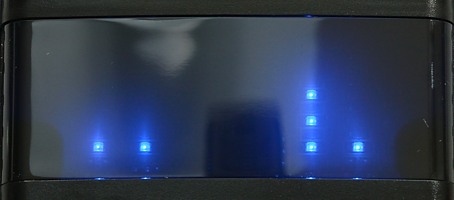
It is important to remember the values, the plastic do easily peel off.
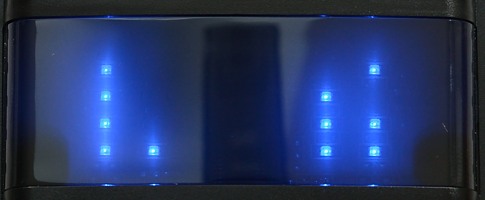
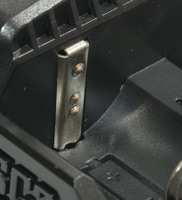
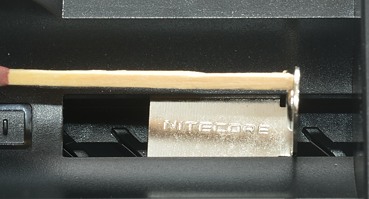
The slots uses the usual construction and works well. They can handle batteries from 27mm to 70mm long.
This excludes some of the longest batteries, especially some protected 26650. Notice the long bar at the plus end, due to this the charger can handle anything up to D or 32xxx size.



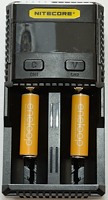
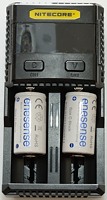
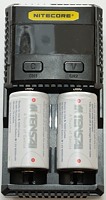
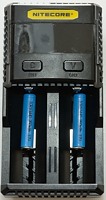
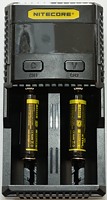
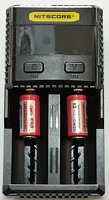
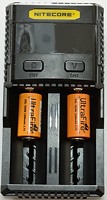
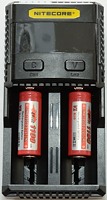
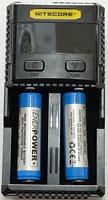
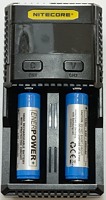
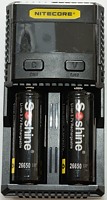
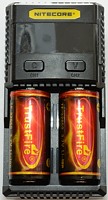
Minimum current is 0.5A, this is a bit high for 10440 cells.
The charger can handle 70 mm long batteries, inclusive flat top cells.
Measurements
- Power consumption when idle is 1.4 watt
- Will charge a LiIon with 0.15mA when charging is finished.
- Will discharge a NiMH with 0.15mA when not powered
- Will discharge a LiIon with 0.7mA when not powered
- Change between long/short cell at around 58mm
- Below 0.8V the charger will report error (All leds flashing) and charge with about 1mA.
- Above 0.8V regular charging is used.
- Will assume LiIon above 2.0V
- Charger will not restart if battery voltage drops.
- Total charge current is 5A
- Max. charge current for a cell is 3A with long LiIon, 2A with short LiIon, 2A with NiMH.
- Default charge current for a cell is 2A with long LiIon, 0.5A with short LiIon, 0.5A with short NiMH and 1A with long NiMH.
- Usb output shares power with slot #2, i.e. when charging in slot #2 usb output is off
- Power cycling and insertion of a battery will restart charging.
4.2V LiIon charging
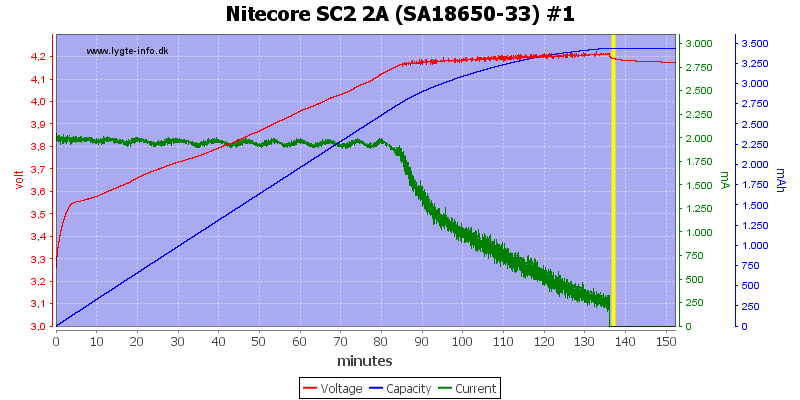
Default charge current is 2A with about 250mA termination for long cells, this may be fine for some high current cells, but is a bit high for many other cells. The curve is CC/CV.
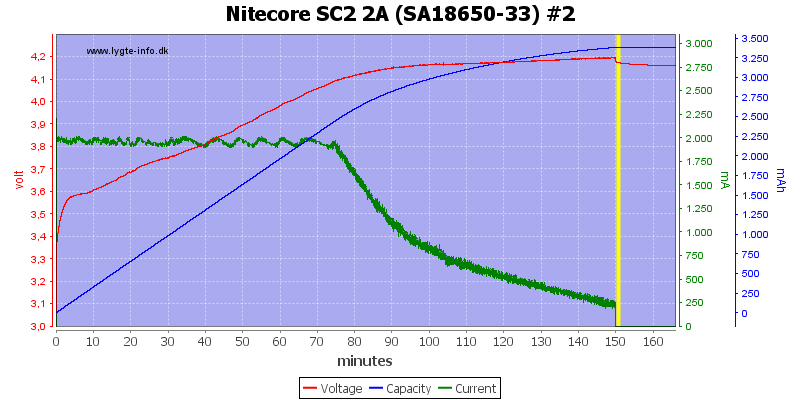
Second slot works the same way.
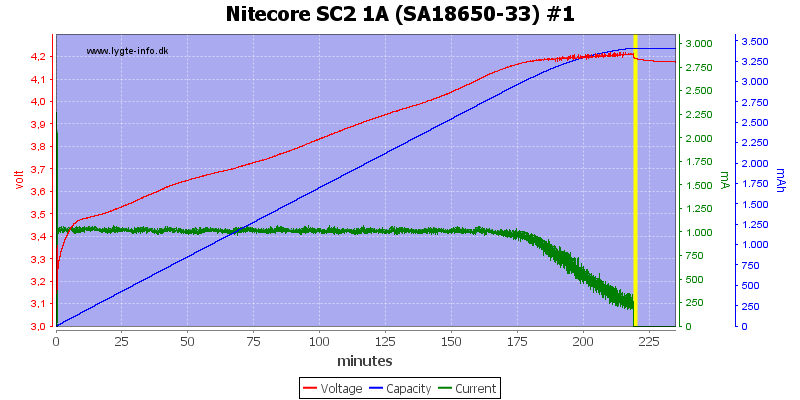
It is possible to reduce charge current, here I am using 1A, but the termination is still around 250mA.
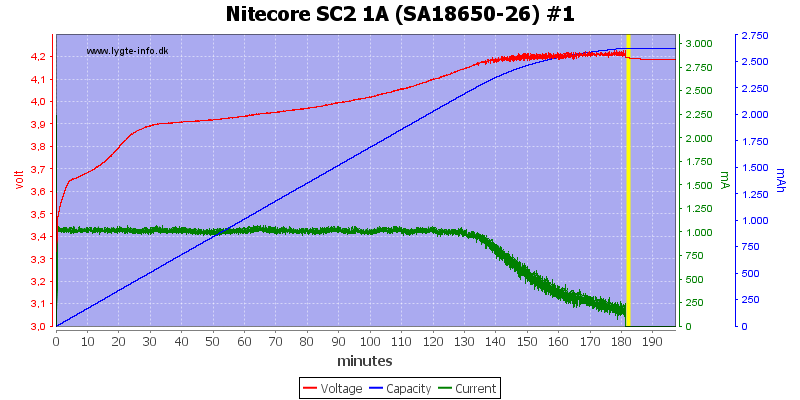
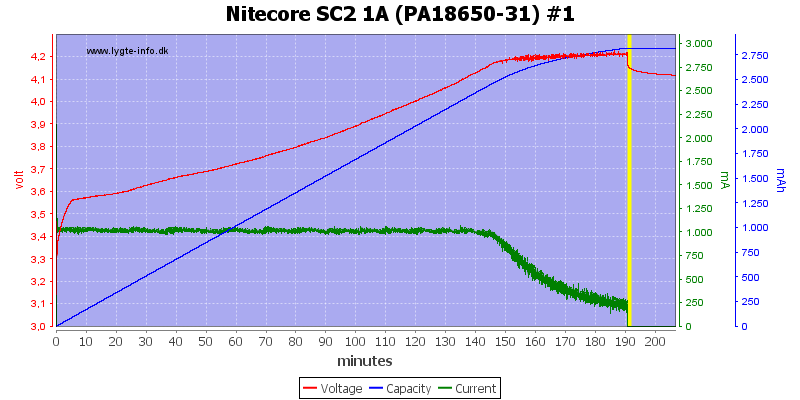
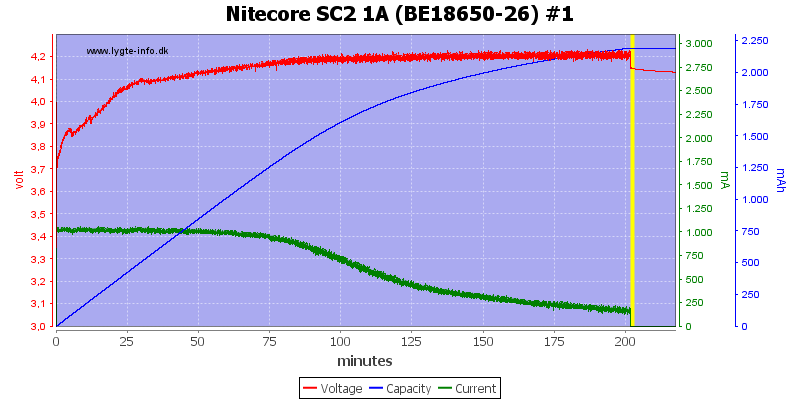
These cell are also charged without problems, but the final voltage is a bit on the low side due to the high termination current.
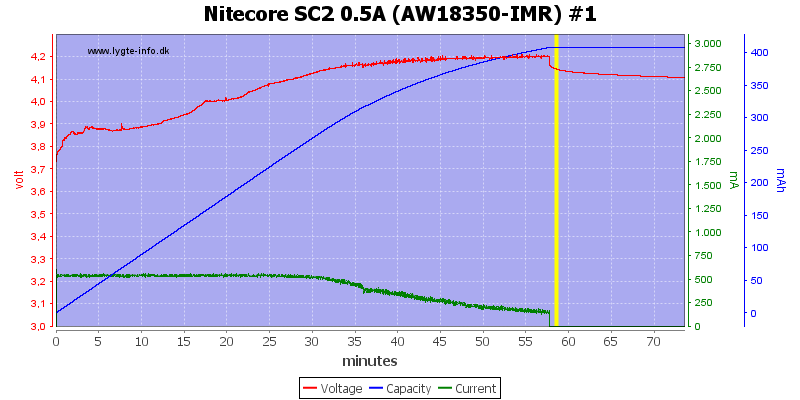
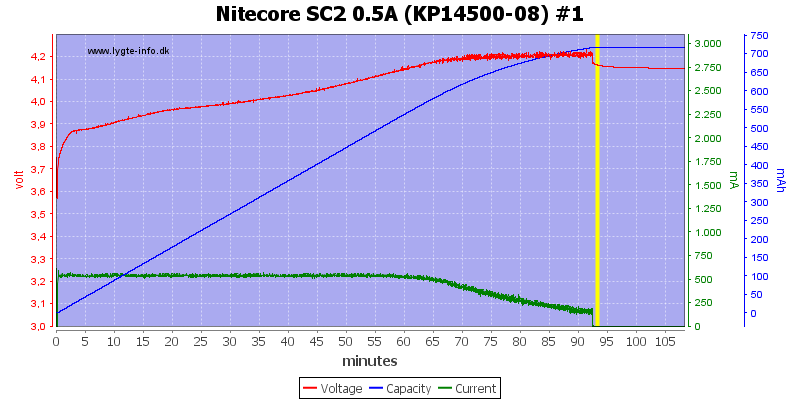
With 0.5A charge current the termination drops to 150mA, this is not low enough to charge small batteries fully.
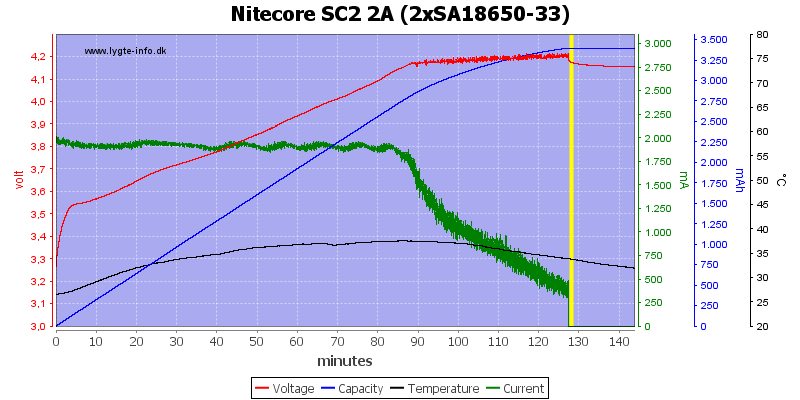
Here I am charging two batteries at 2A.
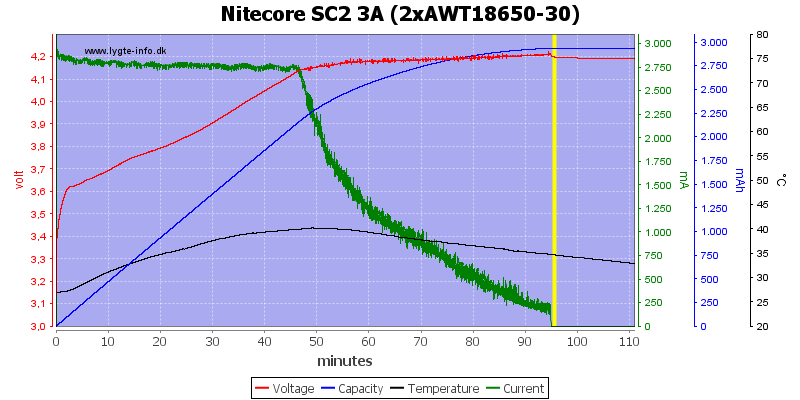
Maximum charge current is 3A+2A.
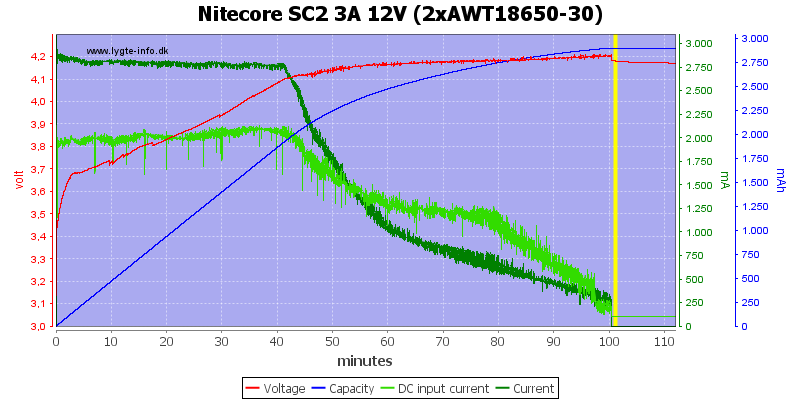
This requires a bit above 2A from 12V
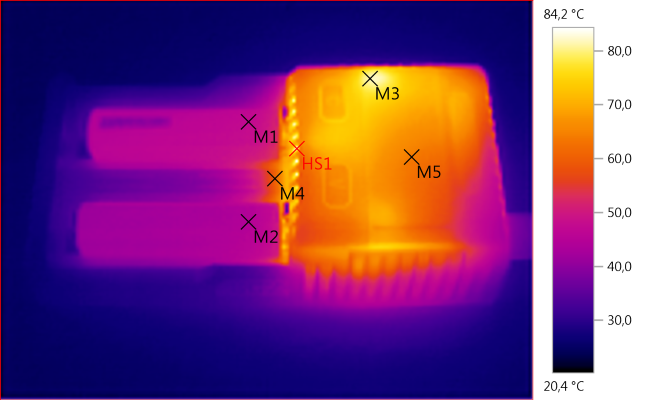
M1: 47,5°C, M2: 44,5°C, M3: 81,4°C, M4: 60,4°C, M5: 63,9°C, HS1: 84,2°C
These photos are from a 3A+2A charge, that is some of the reason for the warm batteries.

M1: 67,2°C, HS1: 94,3°C
The charger gets hot inside.
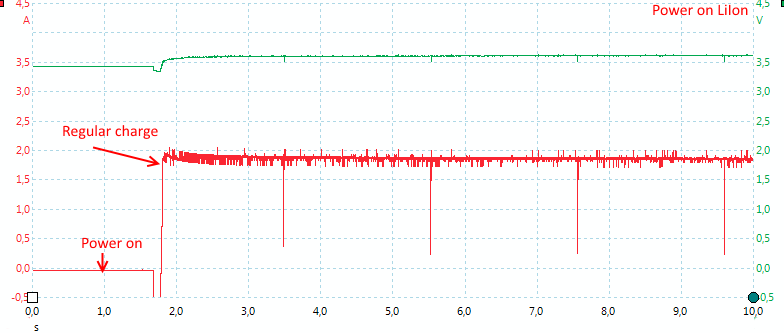
The charger starts very fast.
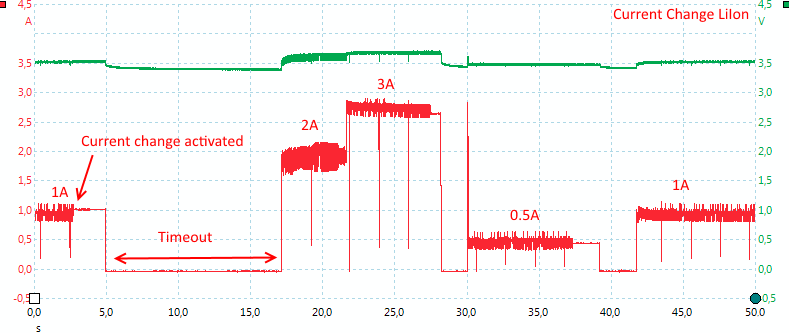
It is possible to change current at any time during a charge. The first time I waited for timeout, the other times I did a quick press to activate the selected current.
3.6V LiIon charging (LiFePO4)
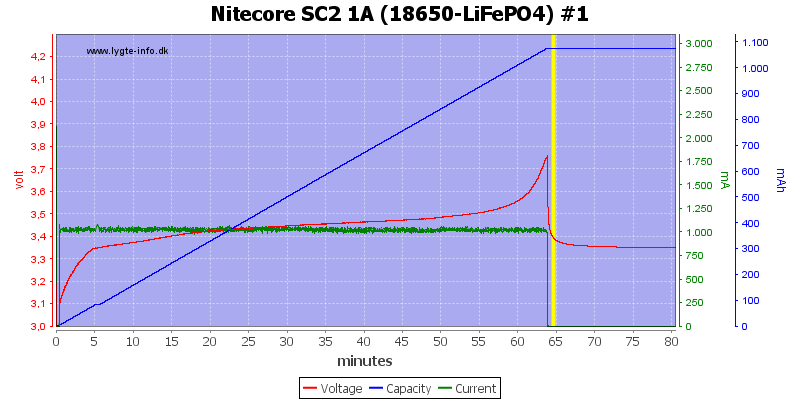
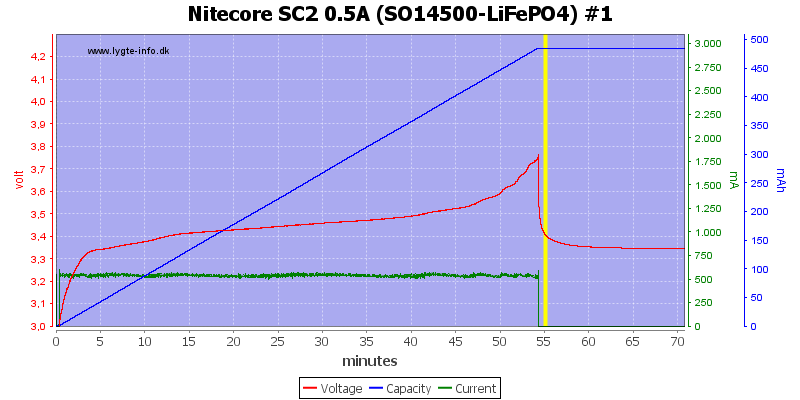
The charger uses a constant current only charge algorithm for LiFePO4 cells with a fairly high termination voltage.
4.35V LiIon charging
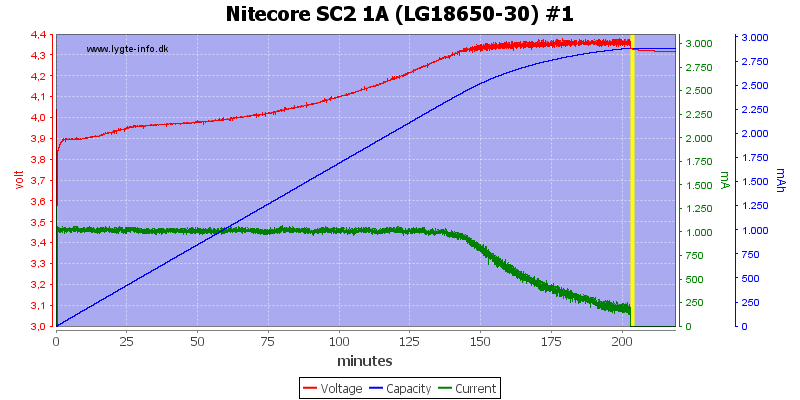
The 4.35V charging (Marked as 4.3V) has the correct voltage, but again it has too high termination current.
NiMH charging
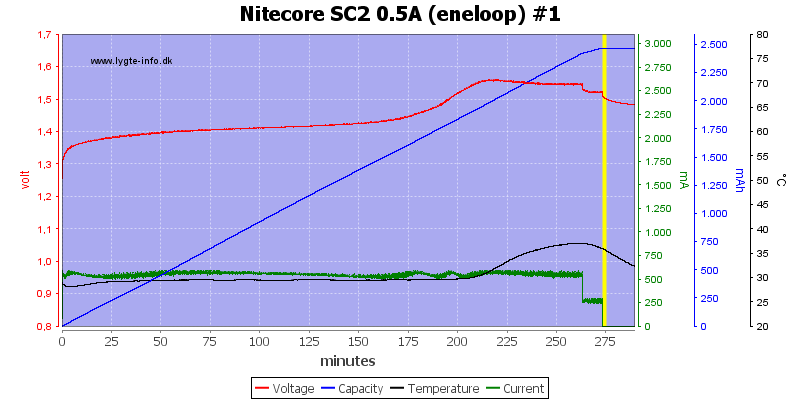
The charger uses a -dv/dt termination on NiMH, it is a bit slow terminating.
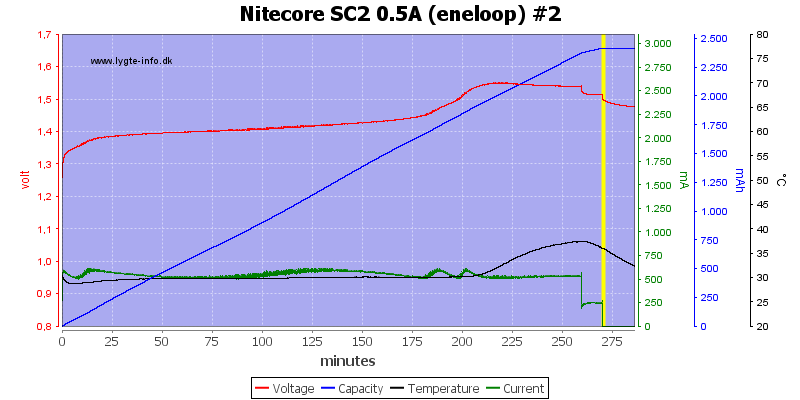
It is the same on the second channel.
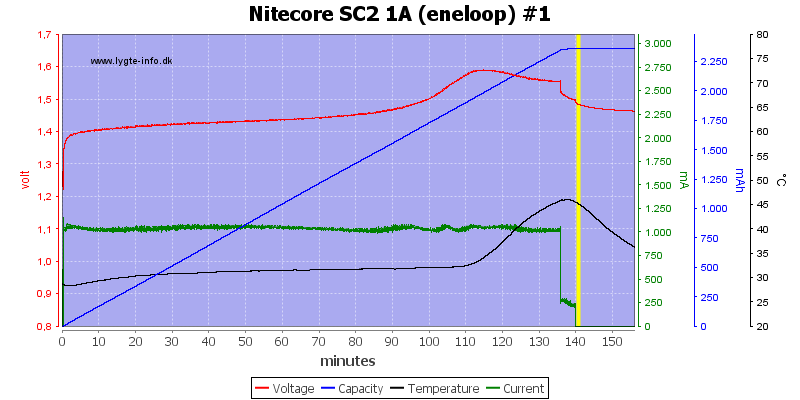
The charging is again slow to terminate at 1A, this means the cells get rather warm.
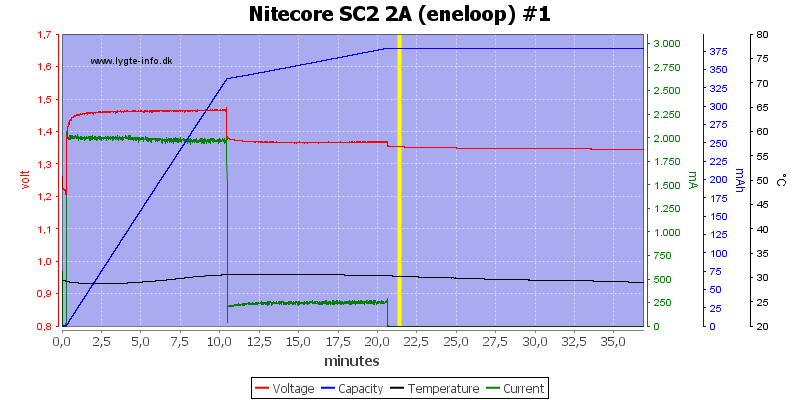
At 2A the charger sometimes terminates premature, I suspect it is due to my sense resistor (It worked fine when I did the IR photos).
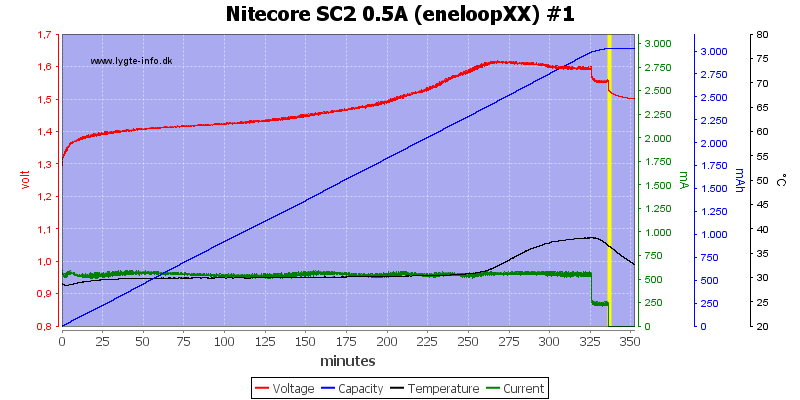
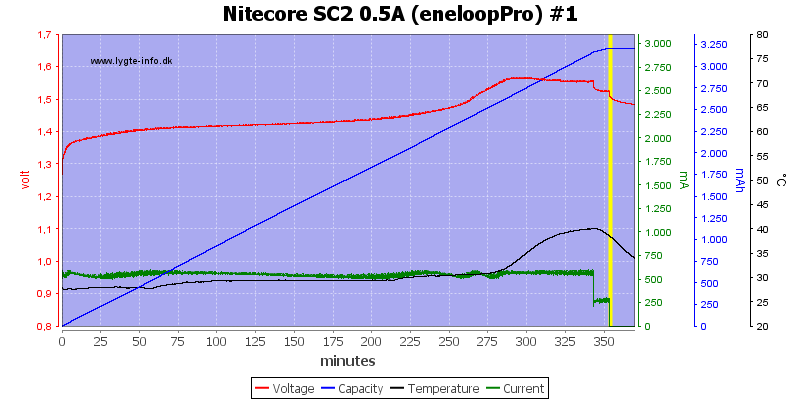
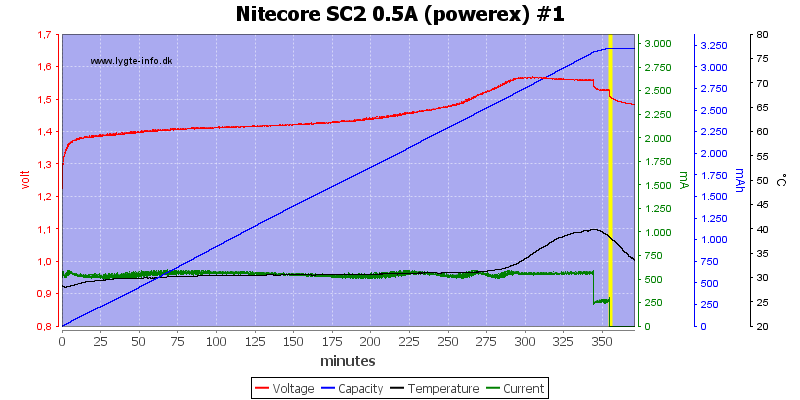
At the 0.5A charge current it charges all 3 high capacity cells fine.
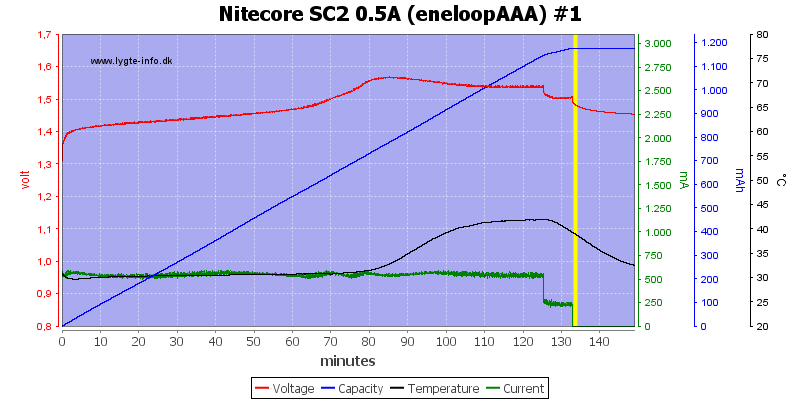
The AAA is over charged due to the slow termination.
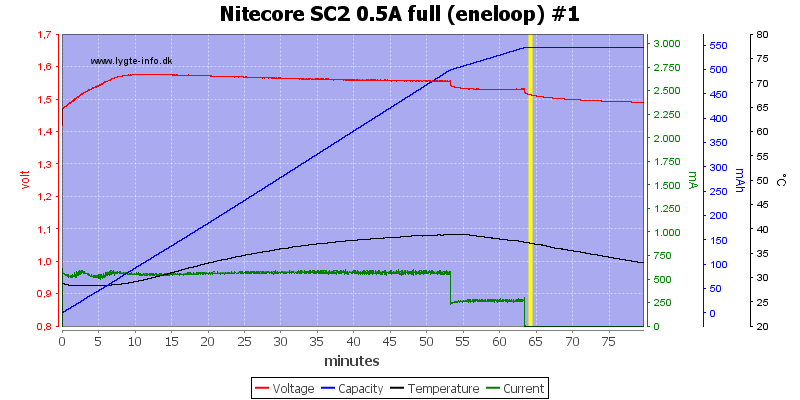
The charger needs about 1 hour to detect a full cell, this is not very impressive.
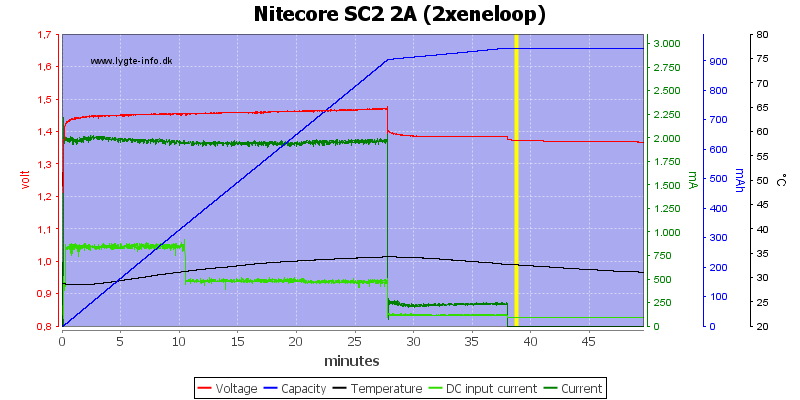
This charge at 2A is terminated way too early, my test setup may be part of the reason.
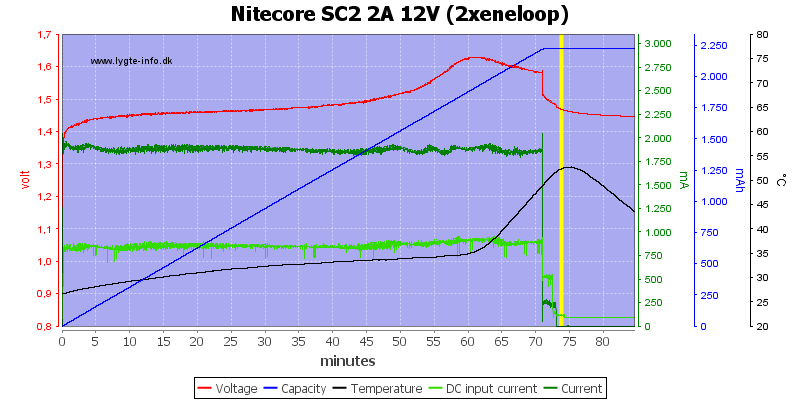
This time the 2A charge worked fine. The slow termination heats the batteries significantly.
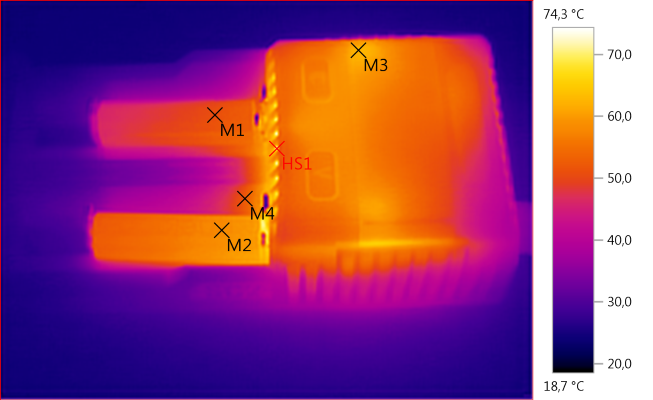
M1: 51,0°C, M2: 58,1°C, M3: 62,5°C, M4: 52,1°C, HS1: 74,3°C
The temperature is fairly high, but I am also charging at 2A.

M1: 59,3°C, HS1: 68,8°C
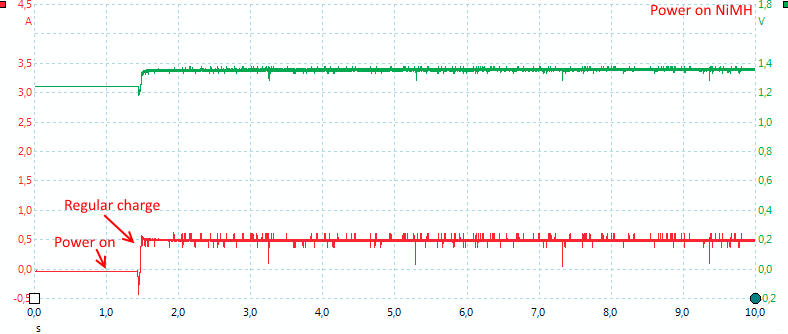
The charger starts very fast.
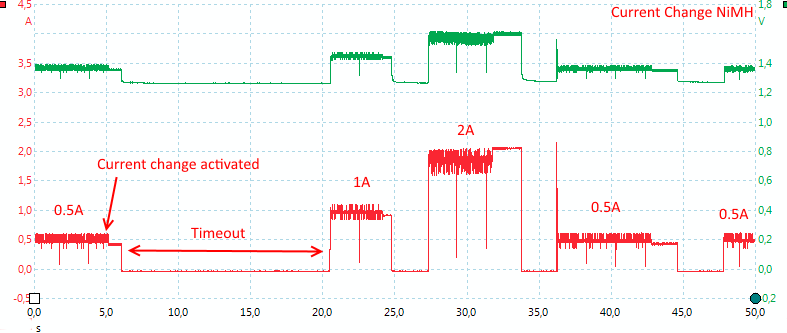
It is possible to change current at any time during a charge. The first time I waited for timeout, the other times I did a quick press to activate the selected current.
USB output
- Usb output shares power with slot #2, i.e. when charging in slot #2 usb output is off
- Usb output is coded as usb charger (DCP)
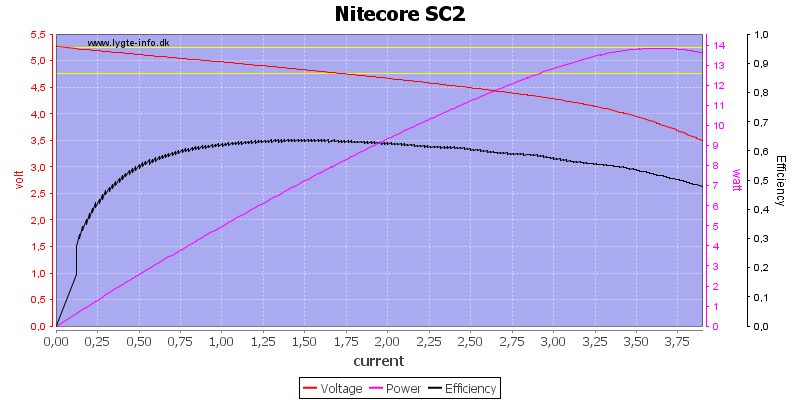
The output do not have an obvious current limit, it just drops slowly with increasing current.
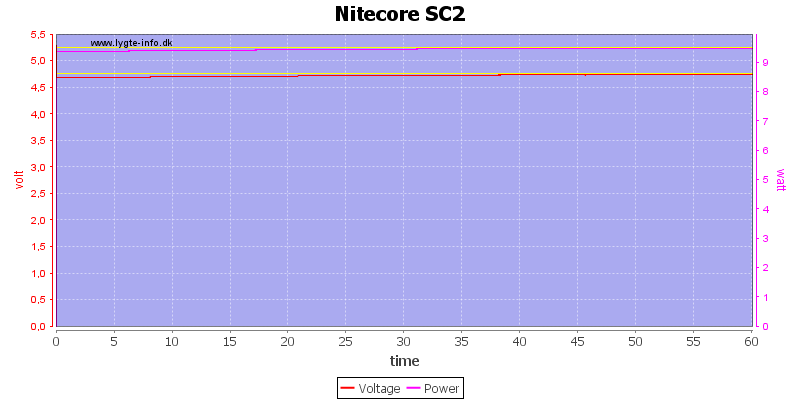
There is no problem maintaining the rated 2A current.
The temperature photos below are taken between 30 minutes and 60 minutes into the one hour test.
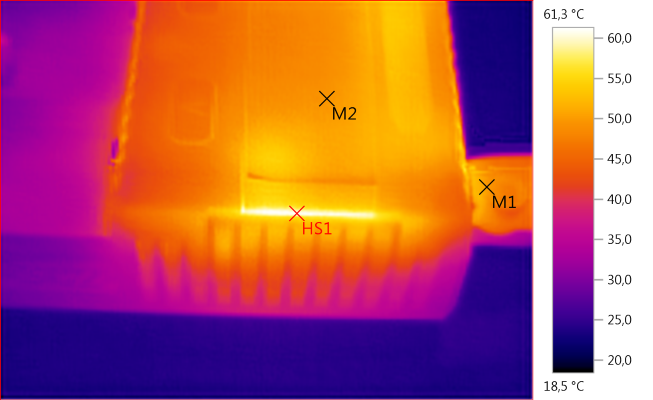
M1: 50,1°C, M2: 49,6°C, HS1: 61,3°C
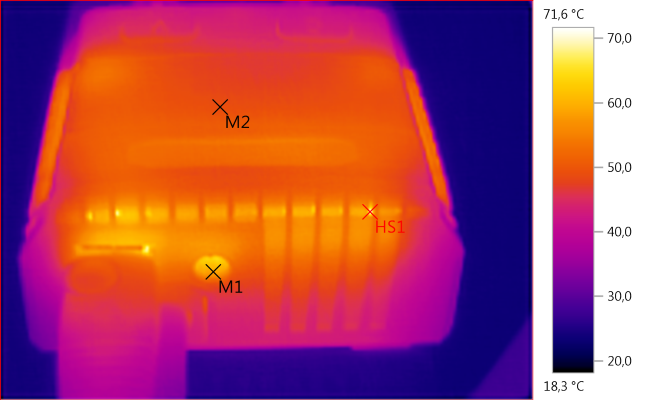
M1: 58,5°C, M2: 49,1°C, HS1: 71,6°C
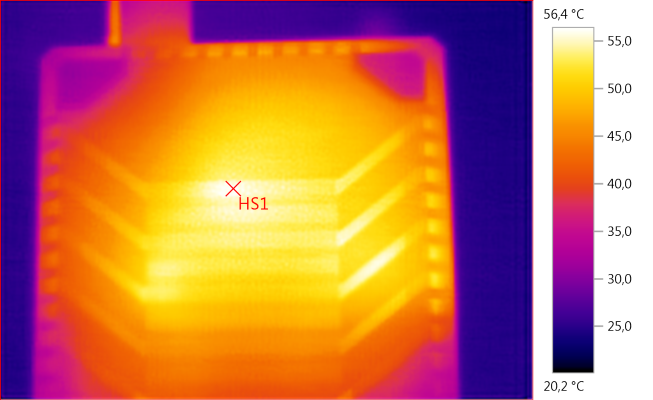
HS1: 56,4°C

Noise is 63mV rms and 360mVpp, this is a acceptable value.

Noise is 45mV rms and 290mVpp
Testing with 2830 volt and 4242 volt between mains and low volt side, did not show any safety problems.
Conclusion
With this update Nitecore has mostly fixed the charger. The charger still has good and bad points, but nothing really bad.
Good points:
- Automatic current/voltage selection.
- Manual override for current selection.
- Can handle very large cells.
- Can charger fairly fast.
- Use the correct charge algorithm for LiIon (It is just the parameters that is slightly wrong).
- The charger feels solid.
Bad points:
- Smaller especially older cells will not be fully charged due to the high termination current
- It is a bit slow on NiMH termination, this adds some extra wear to the batteries.
- The default 2A current for 18650 cell is fine for high current cell, but is a bit high for many other cells.
- The current and voltage markings peel off.
- USB output do not have overcurrent protection.
- It may terminate early at 2A NiMH charging
The charger is good for high current LiIon 18650/26650 cell and acceptable for all other types. This do match with the box saying it is optimized for IMR cells.
Notes
The charger was supplied by a Nitecore for review.
Here is an explanation on how I did the above charge curves: How do I test a charger
Read more about how I test USB power supplies/charger





































































